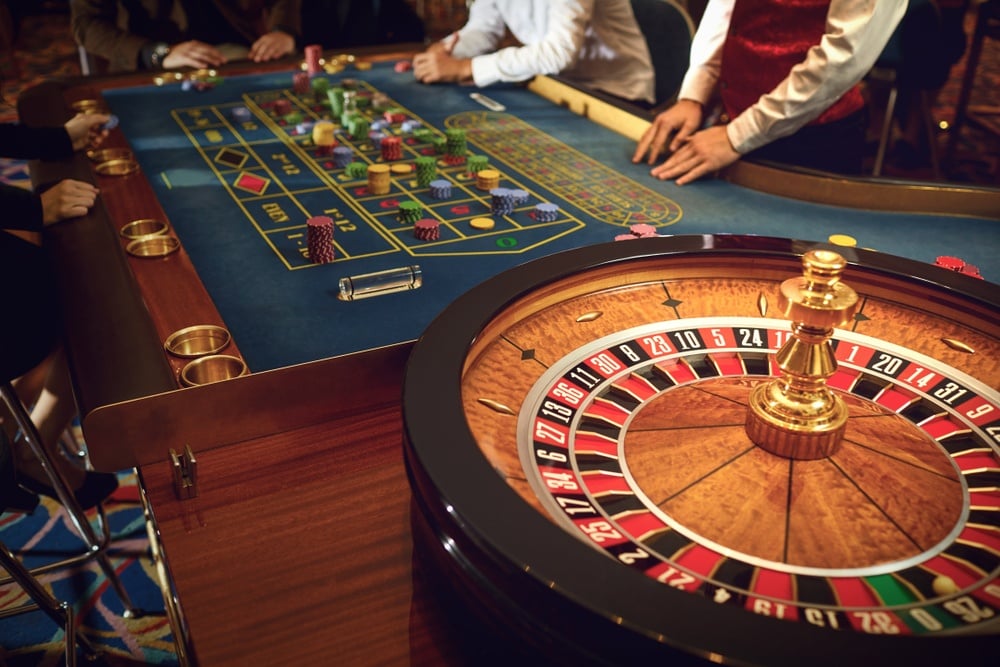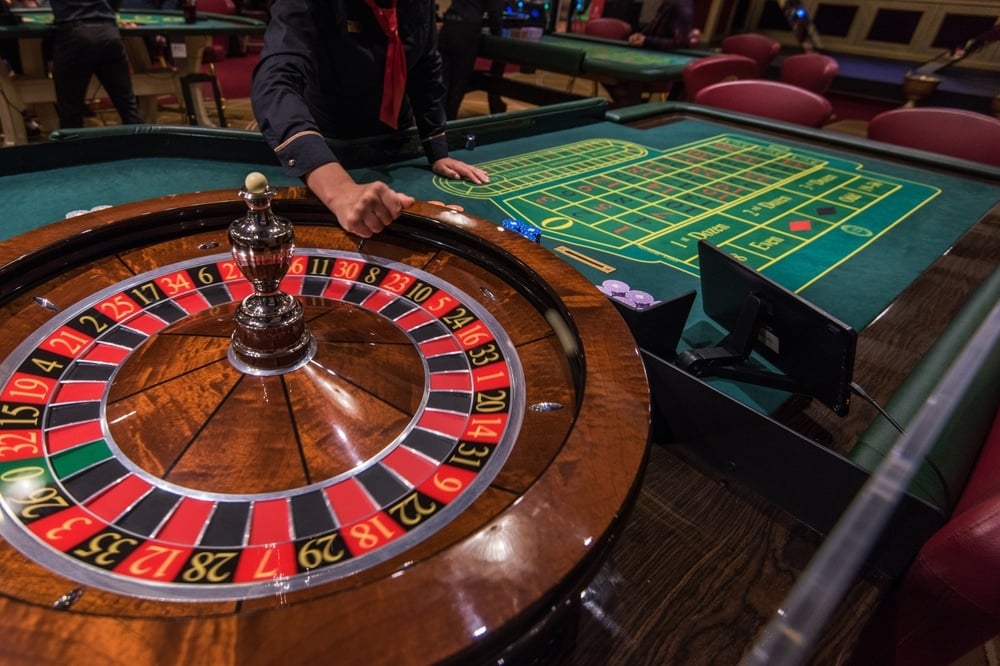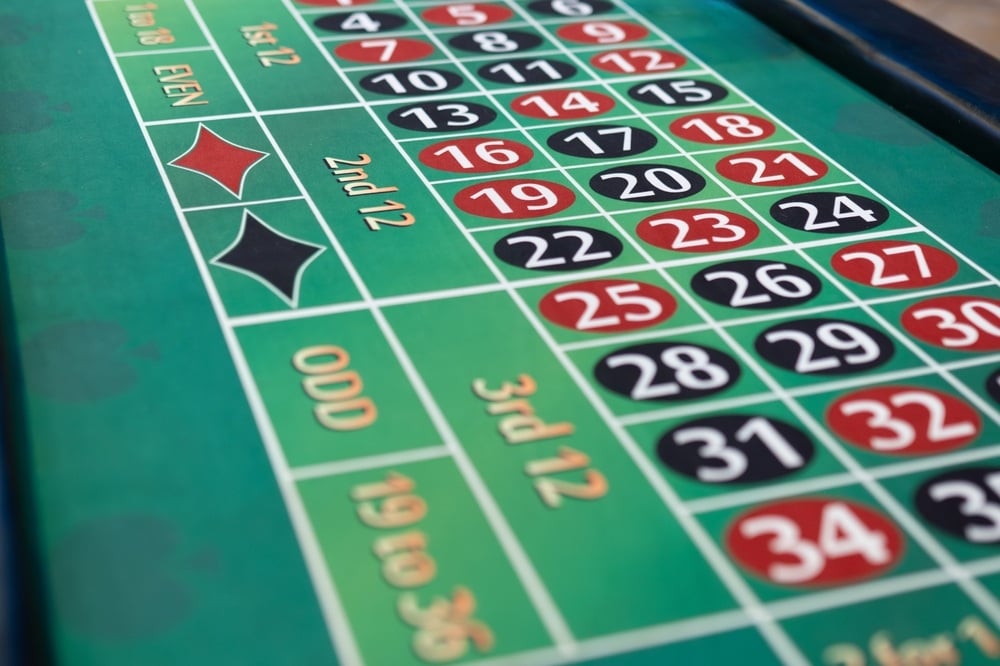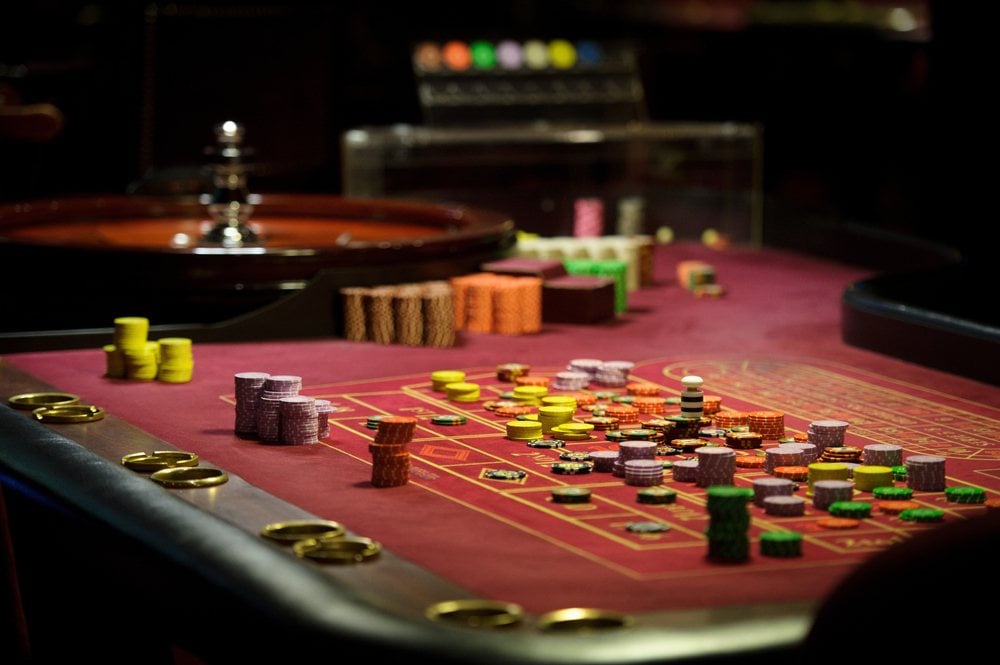Mastering Casino Roulette: A Complete Guide to Playing and Winning

What You’ll Learn About Playing Roulette
Roulette is one of the most popular and instantly recognizable casino games, celebrated for its spinning wheel and array of betting options. Whether you’re new to the game or seeking to sharpen your tactics, this guide delivers vital insights into every aspect of casino roulette, including:
- The foundational components, structure, and key differences between American and European roulette wheels.
- A breakdown of all roulette bet types, including their respective payouts and win probabilities.
- Proven bankroll management methods-for responsible practice and realistic expectations.
- Practical advice on treating roulette as enjoyable entertainment, emphasizing fun over guaranteed profit.
- Essential awareness that every roulette spin is independent and governed by probability, not streaks or patterns.
Roulette has captivated players since the 17th century. Let’s explore how you can approach this game-whether for the excitement, the chance for payouts, or the charm of the casino floor.

Image Credit: Nejron Photo/Shutterstock
The Core Rules and Structure of Casino Roulette
Roulette revolves around a simple premise: predict where a small ball will come to rest after a spin on a numbered wheel. Here are the core elements of the game:
- The Wheel: The central device features numerous pockets. American roulette has 38 pockets (1-36 plus 0 and 00); European roulette has 37 (1-36 plus 0).
- The Ball: A smooth, light ball is launched by the croupier (dealer) into the spinning wheel, running opposite to the wheel’s rotation.
- The Table Layout: The felt displays all bettable numbers and various grouped betting areas.
Game Flow: Step-by-Step
1. Players place chips on their chosen numbers or betting areas on the table.
2. The dealer announces “No more bets” and spins the wheel.
3. As the wheel slows, the ball lands in a pocket, determining the winning number and color.
4. The dealer announces the outcome, collects losing bets, and pays winners.
5. A new round begins.
Numbers alternate between red and black, with the 0 and 00 marked in green. Notably, the sequence on the wheel differs from that on the betting layout, adding a layer of unpredictability and excitement.
Understanding Roulette Bets: Inside vs. Outside Options
Every roulette wager fits into one of two categories-inside or outside bets-each offering different odds and payout structures.
Inside Bets
Placed directly on numbers (or small groups of numbers) within the central grid, inside bets tend to offer higher payouts with lower chances of winning. Common types include:
- Straight Up: Bet on a single number; payout is 35:1.
- Split: Bet on two adjacent numbers (chip on the line between them); pays 17:1.
- Street: Bet on a row of three numbers (chip on the row’s outer edge); pays 11:1.
- Corner (Square): Bet covering four numbers (chip at their shared corner); pays 8:1.
- Six Line (Double Street): Bet on six numbers in two adjacent rows; pays 5:1.
- Trio: Bet including 0 or 00 (e.g., 0, 1, 2); pays 11:1.
- Basket: Exclusive to American roulette, covering 0, 00, 1, 2, and 3; pays 6:1.
Outside Bets
These are bets on larger collections of numbers or attributes:
- Red/Black: Predict the color of the winning number; pays 1:1.
- Odd/Even: Guess whether the result is odd or even; pays 1:1.
- 1-18 or 19-36: Bet on low (1-18) or high (19-36) numbers; pays 1:1.
- Dozens: Choose the first (1-12), second (13-24), or third dozen (25-36); pays 2:1.
- Columns: Bet on one vertical column of 12 numbers; pays 2:1.
Outside bets typically offer greater odds of winning with lower payouts, while inside bets carry more risk, but greater reward.

Image Credit: Nejron Photo/Shutterstock
Choosing Which Numbers to Bet On
Selecting numbers combines strategy and personal preference. Approaches include:
- Personal Numbers: Important dates like birthdays or anniversaries.
- Hot Numbers: Recent winners, for those who believe in streaks.
- Cold Numbers: Numbers not drawn for several rounds, perceived as “due.”
- Wheel Sectors: Clusters of contiguous numbers on the wheel.
- Multiple Coverage: Spreading bets across various numbers or sectors to boost winning chances.
Regardless of approach, remember each spin is totally random. Previous results do not affect future outcomes; every number carries the same probability every time.
Popular Roulette Betting Systems: Strategies Explained
The Martingale System
A classic progressive strategy, Martingale requires doubling your bet after each loss on even-money outside bets. The aim is to recoup all previous losses with a single win. However, its risks include quickly reaching table limits or depleting your bankroll during long losing streaks. While some find it effective in the short run, it does not alter the house advantage.
The Fibonacci Sequence System
This system builds on the famous mathematical sequence (1, 1, 2, 3, 5, 8…) where bets are increased incrementally after losses, and decreased after wins. It’s less aggressive than Martingale but still aims for gradual recovery of losses and may require more extended winning streaks.
The James Bond System
This flat-betting technique covers large sections of the table using a fixed 20-unit stake for each spin:
- 14 units on high numbers (19-36)
- 5 units on Six Line (13-18)
- 1 unit on zero
It covers most (but not all) possible outcomes, offering wins on the majority of spins, but you lose the entire stake if the ball lands within 1-12.
Personalizing Roulette Strategy: Tailoring Your Approach
No single system guarantees success. Consider the following when crafting your strategy:
- Risk Tolerance: Decide between safer, slower strategies and those offering bigger but rarer payouts.
- Bankroll Size: Progressive betting strategies may demand higher reserves to survive losing streaks.
- Your Objectives: Are you seeking extended playtime, entertainment, or maximum profit?
- Wheel Type: European roulette (single zero) favors players over American roulette.
Many experienced players blend strategies or invent their own custom systems. Experimentation and adaptation to your comfort level are key.

Image Credit: Nejron Photo/Shutterstock
Managing Table Minimums and Maximums: Essential for Every Player
Every roulette game features minimum and maximum bets, which can impact strategic decisions:
- Minimum Bet: The lowest permitted wager per spot, often between $1 and $25.
- Maximum Bet: The largest allowed for a single bet, often different for inside and outside bets.
- Total Table Minimum: Sometimes, the sum of bet amounts must meet a minimum, even if individual bets are below that level.
Understanding these limits is crucial, especially for progressive betting systems, as table caps can thwart your betting progressions.
Roulette Game Variations: American, European, and French Styles
American Roulette
- Includes both 0 and 00
- Higher house edge: 5.26%
- Widely available in the U.S.
European Roulette
- Only a single 0
- Lower house edge: 2.7%
- More favorable to players, common in European and some high-end U.S. casinos
French Roulette
- Uses the European single-zero wheel
- Features special rules (“La Partage” or “En Prison”) that further lower the house edge on even-money bets to 1.35%
Choose European or French tables whenever possible for improved win potential.
Roulette Odds, Payouts, and the House Edge
Understanding the real odds and payoffs helps you make smarter bets. Here's a comparison for European roulette:
| Bet Type | Numbers Covered | Payout | True Odds | House Edge |
|---|---|---|---|---|
| Straight Up | 1 | 35:1 | 36:1 | 2.7% |
| Split | 2 | 17:1 | 18:1 | 2.7% |
| Street | 3 | 11:1 | 11.67:1 | 2.7% |
| Corner | 4 | 8:1 | 8.5:1 | 2.7% |
| Six Line | 6 | 5:1 | 5.33:1 | 2.7% |
| Dozen/Column | 12 | 2:1 | 2.17:1 | 2.7% |
| Red/Black, Odd/Even, 1-18/19-36 | 18 | 1:1 | 1.06:1 | 2.7% |
In American roulette, the extra zero increases the house edge to 5.26%, making it harder to win over time. Only the “basket” bet (0, 00, 1, 2, 3) carries an even higher edge at 7.89%.
Bankroll Management: Smart Money Habits for Roulette
Effective money management safeguards your enjoyment and keeps losses in check. Follow these steps:
1. Set Your Total Gaming Budget: Use only funds you’re comfortable losing.
2. Portion Your Roulette Allowance: If playing multiple games, allocate a share for roulette specifically.
3. Divide Into Session Stacks: Split your total into smaller groups for each session.
4. Pre-Determine Loss Limits: Choose a cutoff point (often 50-75% of your session bankroll) when you’ll walk away.
5. Set Win Milestones: Plan to cash out once you reach a realized profit (e.g., 50% gain).
6. View Bankroll as Entertainment Spend: Treat losses as the price of enjoying the game.
Adapting Bet Size During Play
- Start Small: Begin at the lower end to get acclimated.
- Increase on Winning Streaks: Gently raise your bets when luck favors you.
- Drop Back After Losses: Reducing wagers helps preserve your session’s longevity.
- Limit Each Bet to 1-2% of Your Session Bankroll: A steady betting size helps avoid rapid losses.

Image Credit: Olinchuk/Shutterstock
Consistency and Emotional Balance
Maintaining a consistent approach prevents emotional swings and impulsive bets. Regularly review your strategy, stick with your plan over a set number of spins, and keep notes to track your performance objectively.
Pro Tips for Increasing Roulette Success
Building structure into your roulette sessions can pay off with longer-lasting enjoyment:
1. Pick the Right Table: Seek tables with suitable limits and a relaxed atmosphere.
2. Observe Before Playing: Watch several spins to get acquainted with the dealer and table pace.
3. Establish a Consistent Betting Sequence: Avoid confusion and rushed decisions by following a set pattern.
4. Track Numbers: Discreetly monitor which numbers win, or simply note trends mentally.
5. Take Frequent Breaks: Stepping away refreshes your attention and curbs emotional plays.
Minimize Distractions in the Casino Setting
- Go easy on alcohol-it clouds decision-making.
- Ignore digital displays of “hot numbers,” as these do not influence probabilities.
- Politely disregard unsolicited advice based on superstition.
- Manage your time with a watch or phone, as casinos often obscure clocks and natural light.
- Never chase lost bets with oversize wagers-stay within your limits.
Using Technology for Better Online Roulette Play
Online and mobile platforms offer several technology-based tools to enhance your gameplay:
- Strategy Trackers: Software that logs your results for analysis.
- Odds Calculators: Quick tools for evaluating mixed bet returns.
- Free “Demo” Play Modes: Practice systems and strategies risk-free.
- Automated Notifications: Alerts to inform you when you’ve hit win/loss targets.
While these features support responsible and strategic play, remember they cannot circumvent the house edge or guarantee winning predictions.

Image Credit: Oleh Tiurkin/Shutterstock
Analyzing the Payouts: Balancing Risk and Reward
Roulette’s bets range from bold, high-reward plays to conservative options for steady, low-risk action.
High-Risk, High-Reward
- Straight Up: 35:1
- Split: 17:1
- Street: 11:1
Medium-Risk, Medium-Reward
- Corner: 8:1
- Six Line: 5:1
Low-Risk, Low-Reward
- Dozens / Columns: 2:1
- Red/Black, Odd/Even, High/Low: 1:1
Many players combine several bets to hedge their risk, such as placing a straight-up bet alongside an outside wager like Red.
Calculating Your Potential Winnings
To determine your potential roulette profits:
Single Bet Formula: Potential Return = Bet Amount × Payout Ratio + Original Bet
Example: A $10 straight-up bet (35:1) = (10 × 35) + 10 = $360 return if it hits.
Multiple Bets: Tally each bet’s potential outcome individually, then add or subtract overlapping results as appropriate.
Example: A $10 bet on Red and a $5 bet on “1st Dozen”:
- If a red number in the first dozen wins: $15 profit on those bets.
- If a red number outside the first dozen wins: $10 profit, minus the $5 lost on the dozen bet.
- If a black number in the first dozen hits: Only the dozen bet wins.
- If zero or a non-red, non-dozen number win: Both bets lose.
Roulette Frequently Asked Questions for Beginners
How do you start playing Roulette in a casino?
- Find a European roulette table with comfortable limits.
- Exchange cash for colored chips unique to you.
- Start with simple outside bets for easier tracking and smaller losses.
- Place your chips before the dealer announces “No more bets.”
- Observe payouts and learn from other players’ habits.
<li













